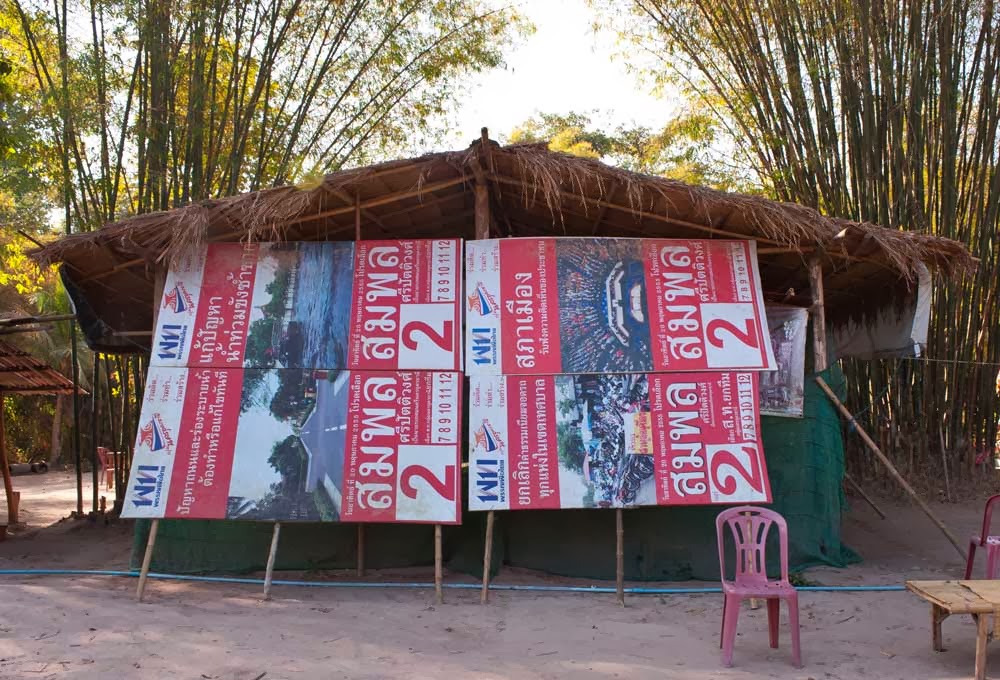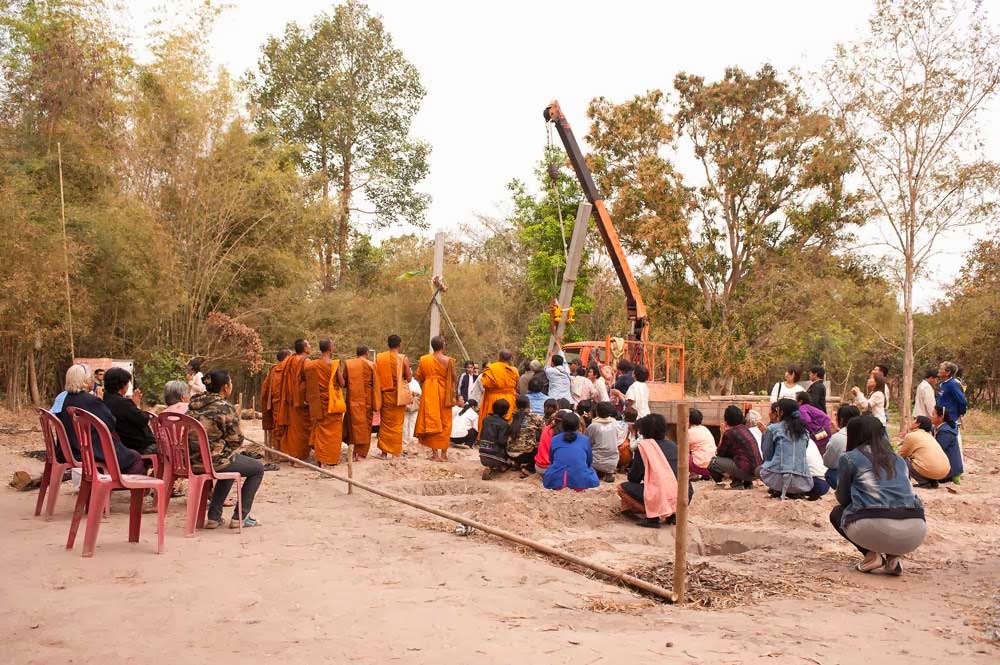 |
| Harvesting Salt - Ban Dung, Thailand |
"Salt of the Earth"
Lets drink to the hard working people
Lets drink to the salt of the earth
Lets drink to the two thousand million
Lets think of the humble of birth
Lets drink to the salt of the earth
Lets drink to the two thousand million
Lets think of the humble of birth
Songwriters: JAGGER, MICK / RICHARDS, KEITH
Salt Of The Earth lyrics © ABKCO Music Inc.
My ambition and goal for my photography, as well as in writing this blog, is to extraordinary people doing ordinary things. In so doing, I wish to show how different people appear, to provide a glimpse into other cultures, to celebrate the diversity of mankind and to demonstrate that, despite our appearances, we are so much alike.
Living here in Southeast Asia, I have plenty of opportunities to act on my ambition and to strive to fulfill my goal. I have been able to photograph many activities such as subsistence rice farming, sugar cane cultivation, brick making, knife making, cassava rice cultivation, melon farming, broom plant harvesting and countless cultural events of the various peoples who inhabit the region.
My quest has been made much easier by the friendliness of the people and the easy access to their daily work, activities, and celebrations.
Last Saturday, we drove out to Ban Dung to observe and photograph the production of salt - an activity that we had not watched before.
 |
| Recycled Sugar Bags Filled With Rock Salt |
Alongside of Highway 2096, the road from Ban Dung to Ban Muang, just outside of Ban Dung is the salt production area. Off to the right are a series of what could be mistaken for rice paddies. Each of the flooded contained areas is about the size of the typical rice paddies here in Isaan. However there is no vegetation growing in the contained areas or on or along the low dikes that border them. The area around the dikes is a wasteland - crusty ground of various colors from brown to yellows to beige and to white. The water contained in the paddies, which are actually evaporation ponds (salt pans), tends to be yellowish browns in hue.
When the rains have stopped, starting in October, the evaporation ponds are prepared and repaired for the upcoming production season. When the rains return, typically in May, salt production halts due to the diluting effects of rain on the solar evaporation process.
Wells are drilled throughout the salt production area. Fresh water is pumped into the wells to dissolve the underground salt formations. The ensuing brine solution is then pumped through exposed PVC pipes throughout the evaporation area of the facility to fill the prepared salt evaporation ponds to a depth of approximately 10 inches. In about 10 days the water level has decreased to about 4inches and salt crystals have precipitated out of the pregnant liquid. Workers then harvest the rock salt by raking the crystals off the salt pond bottom using long pole squeegees into rows from which the workers will scoop the rock salt to fill recycled sugar bags. Periodically workers come by with an "iron buffalo" (naguya) and wagon to collect the filled bags and transport them to a central location to be dumped in a large pile to await the arrival of buyer's large trucks.
 |
| Part Of Fluid Distribution System |
 |
| Boys Playing At Salt Well |
That is the technology and science regarding the salt production. However like just about all things in life technology and science are just a part of the story. The other part is people, the people who initiate, maintain, and control the processes . It is the mostly anonymous and unidentified workers of our worlds that plant the crops, harvest the crops, process our foods, mine our minerals, create our modern necessities and conveniences.
 |
| Harvesting Rock Salt Off Of Evaporation Pond Bottom |
The salt production workers, for the most part, are unidentifiable. Just like the rice farmers, the salt workers are covered head to toe. They wear hats with large brims for protection from the strong sun. For additional protection from the sun they cover their face with cloths leaving only their eyes exposed. Where as Westerners will spend a great deal of money to obtain a tan during the winter and lay out exposed to the sun during the summer, here people spend money on special creams and wear additional clothing to prevent getting dark skin. There is a bias against having dark skin because it identifies a person as an outside worker and member of the lower status groups.
Since they are working around so much salt and water, the workers also wear rubber boots and gloves.
 |
| Scooping Up Rock Salt |
The workers appeared to be an equal mix of men and women with the women focusing on harvesting the salt and filling the bags while the men occupied themselves with loading the bags onto wagons, transporting them and emptying them on to a large pile.
 |
| An "Iron Buffalo" (Naguya) Hau;ing Bags Of Rock Salt |
Most of the workers commute to the salt mine from Ban Dung and smaller surrounding villages. However some of the workers, the supervisors, lived at the mine site. No doubt their additional duties for the supplied housing involved providing security and maintaining the equipment as necessary outside of normal working hours.
 |
| Supervisor Housing Located Above Evaporation Ponds |
We were driving along Highway 2096 when we spied the salt production area. We turned and drove a short distance down a dusty dirt road to the center of a residential complex of the salt mine. In the middle of the complex there was a large pile of rock salt. At the far end of the area there was a large group of children huddled together on the ground playing some kind of game. Off to the side of the children was the outhouses for the housing as well as workers in the field. We parked the truck off to the side and out of the way. Upon exiting the truck, as I was getting my camera backpack, Duang told the people that we came to see the work and to take pictures if it was OK. There was, as is typical. no problem. We then walked down to the evaporation ponds.
 |
| Woman Worker Filling Bag With Salt |
We wandered about the various dikes that separated the evaporation ponds. Workers were busy raking salt crystals off of the bottom of the ponds. Other workers who had completed piling the rock salt from their pond were occupied scooping up the crystals and dumping them into bags. A team of three workers was busy going from pond to pond collecting filled bags. loading them on to a wagon, transporting them up to the residential area and dumping the bag's contents on to the every growing pile.
 |
| Peelawat Resting In Worker's Shelter |
My five year old grandson and I set off to photograph the workers in the evaporation ponds while Duang followed behind at her own pace. After awhile Peelawat became hot and tired , so he rested along with my camera bag, under a worker's shelter, a primitive tepee constructed from three poles and a plastic tarp with two sahts placed on top of one of the dikes. By now curiosity overcame some of the older boys who were part of the congregation up in the residential area. They followed me around and I took some photos of them doing things that any young boy would enjoy - playing with the water, pipes and well of the fluid distribution system.
Duang was not bored. She kept busy talking to the workers as they toiled. She has a great curiosity about people so she is often engaged with the people that I am photographing. She then fills me in on the details so that I have a better understanding of what I had photographed.
 |
| Offloading Rock Salt On To Central Pile |
It was around lunch time when we headed back up the hill to the residential area. A mother and her three children were sitting on a raised platform outside of their house. Here in Isaan you do not ignore people and just go about your business. We went over to her to socialize a bit before leaving. I always view these interactions as an opportunity to learn more about the people and their work.
I generally do not give money to people that I photograph. Typically we spend time talking with them - even answering the questions that they have about us and our life. What I often do is to buy some refreshments and food that we share with the people. For me this is more personable and expresses gratitude better than just handing over some money. The people had allowed us to share in their life and giving them money seems to be rather impersonal and detached. Sharing food and refreshments gives us an opportunity to share some of our life with them. I have found that although we often consider our lives to be rather plebeian, other people view us as just as interesting as we view them. You see ... we are so much alike.
As Mick Jagger and Keith Richards wrote ...
Lets drink to the hard working people
Lets drink to the salt of the earth
Lets drink to the two thousand million
Lets think of the humble of birth
Lets drink to the salt of the earth
Lets drink to the two thousand million
Lets think of the humble of birth
Let's celebrate the anonymous and faceless people who struggle and toil to make our world a better place.
Let's celebrate the anonymous and faceless people because, in Allen's World, they are the real celebrities.










































